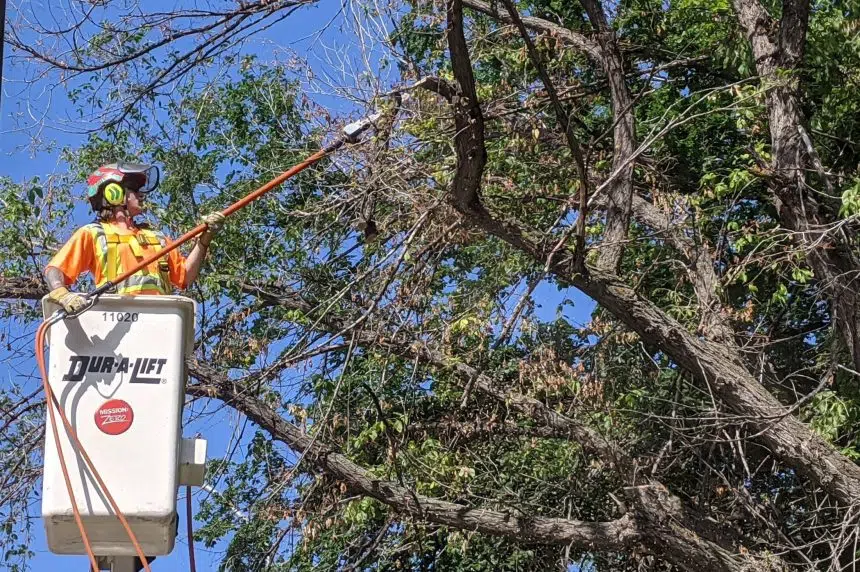Dutch Elm disease is once again wreaking havoc on Regina trees, with 17 confirmed cases already this year.
City crews have been busy hauling away dead or dying trees, prompting renewed concerns about how quickly the disease can spread through neighbourhoods lined with stately elms.
To get a handle on what’s behind the alarming rise in cases; and what residents can do to help, Garden Talk host Rick Van Duyvendyk joined the Greg Morgan Morning Show to share his expertise.
Listen to the full interview here:
https://iono.fm/e/1573119
“We’ve got an urban forest made up of a lot of elm trees,” Van Duyvendyk explained. “When you have a monoculture like that—meaning all the same type of tree along streets—the disease can move fast.”
Dutch elm disease is caused by a fungus carried on the backs of tiny elm bark beetles. Even a small piece of bark, about one square inch can hide over 200 beetles. These beetles burrow into trees, introducing the fungus that blocks water flow and eventually kills the tree.
Read more:
- Garden Talk: Give your summer lawn some love
- Dutch elm disease hits Regina early, city urges public to help protect urban forest
- ‘Rotten’ tree crashes onto B.C couple’s truck in Saskatoon thunderstorm
Van Duyvendyk emphasized prevention as the best line of defence.
“Keep your trees healthy,” he said. “Deep-water them at least once a month, even if they look big and established. People move into areas with beautiful mature trees and think watering the lawn is enough, but you have to water the trees too.”
Proper watering means aiming for the “drip line,” which is the outer edge beneath the branches where a tree’s feeder roots absorb moisture. Fertilizing is also important to keep trees vigorous and less vulnerable to pests.
Van Duyvendyk said it’s important to avoid pruning elms during active beetle season. “When you prune, the tree weeps sap and that attracts the beetles that carry Dutch elm disease,” he warned.
Beyond elm trees, many gardeners are dealing with heat stress in their plants this summer. Container gardens, in particular, need extra attention during hot spells.
Van Duyvendyk recommends using a slow-release fertilizer in pots and supplementing weekly with a balanced liquid fertilizer. Vegetables like tomatoes and cucumbers demand consistent moisture.
“If you go wet-dry, wet-dry, you’ll get what’s called blossom end rot,” he said. “That’s where tomatoes turn brown or black at the bottom. Keeping moisture consistent and adding calcium makes a big difference.”
And for those battling slugs in their hostas (plantain lilies) or vegetable garden, Van Duyvendyk offered both old-school and modern solutions.
“Put a headlight on at night and go hunting for them,” he joked.
For those feeling less adventurous, pet-safe slug baits are available. Or he recommends trying the classic bear trap: bury a cottage cheese container, add a bit of beer and the slugs will crawl in and drown.
Ultimately, Van Duyvendyk says vigilance and a bit of extra effort can help protect both urban trees and backyard gardens.
“They’re all part of your landscape,” he said. “Healthy plants and trees help keep the whole city looking good.”
- You can listen to Rick & Jill Van Duyvendyk on Garden Talk every Sunday morning from 9 to 11 a.m. on 980 CJME and 650 CKOM.
Read more:











